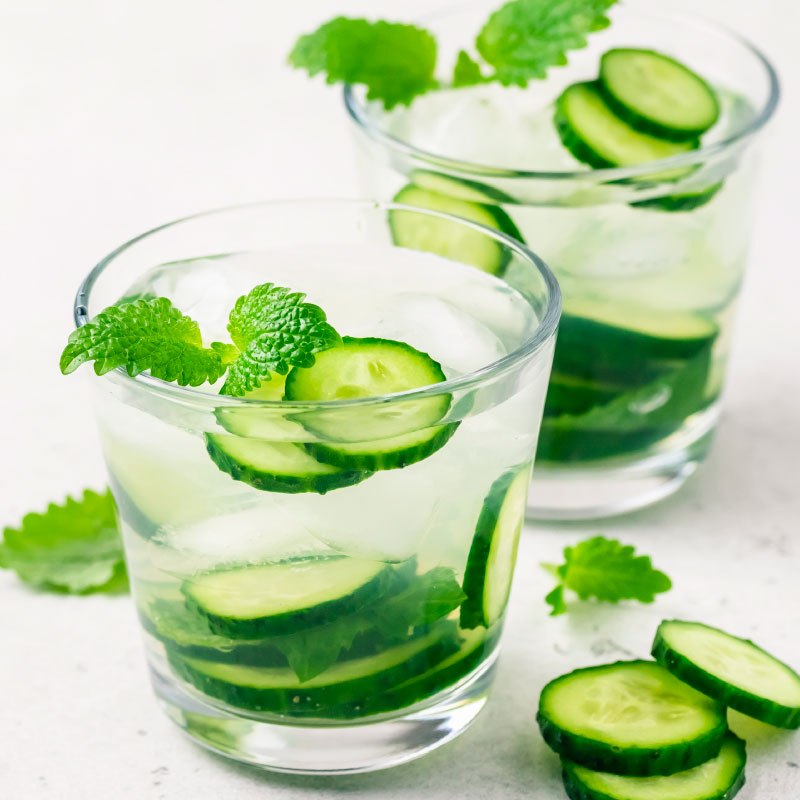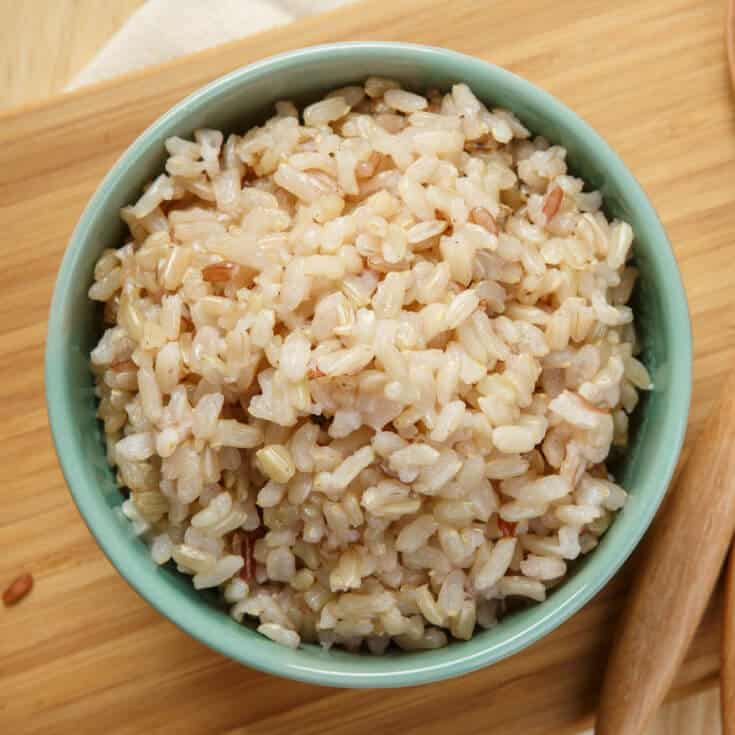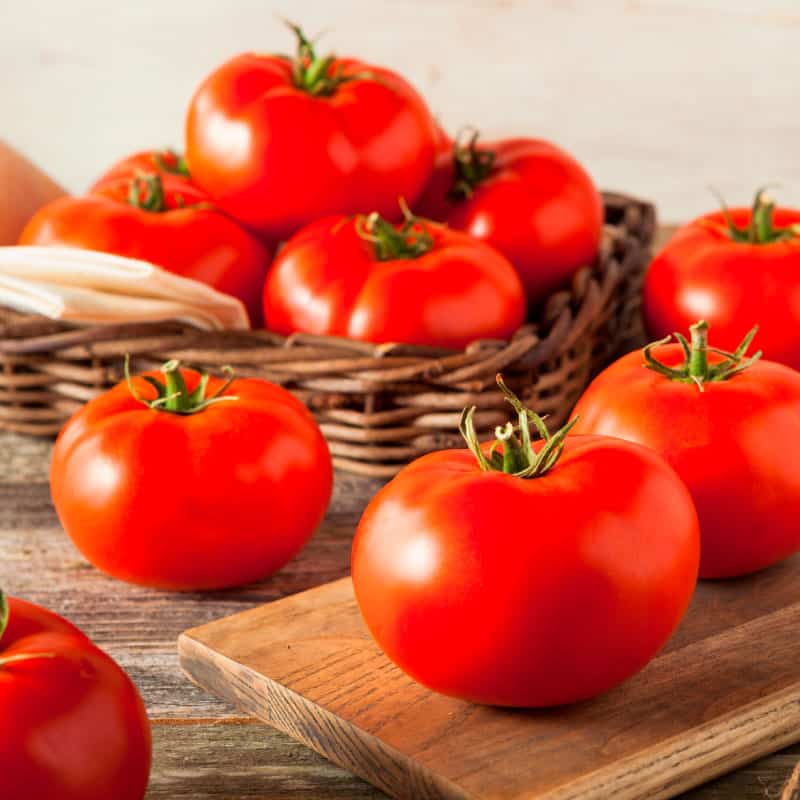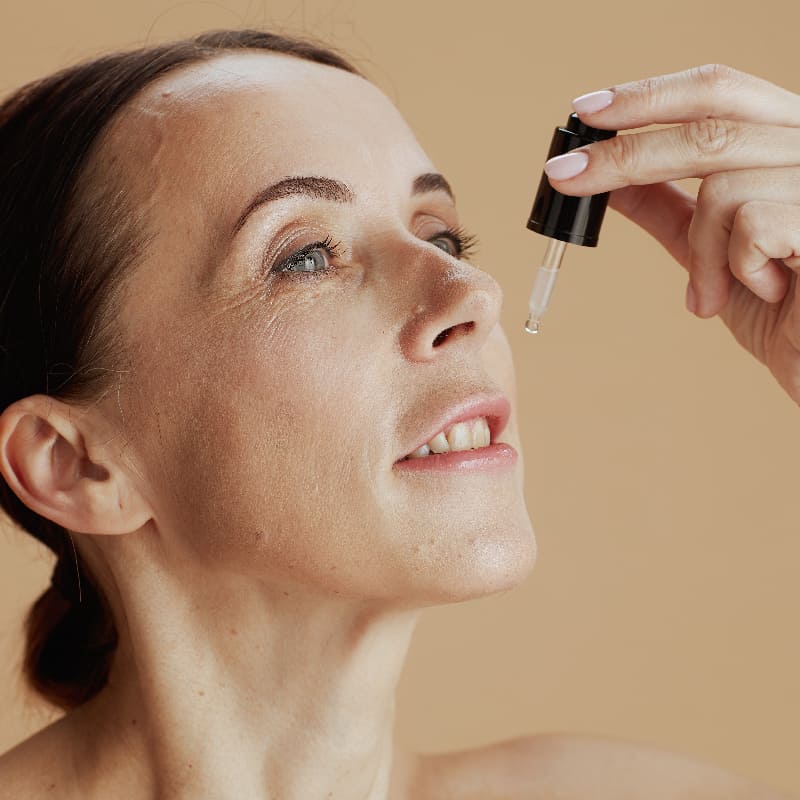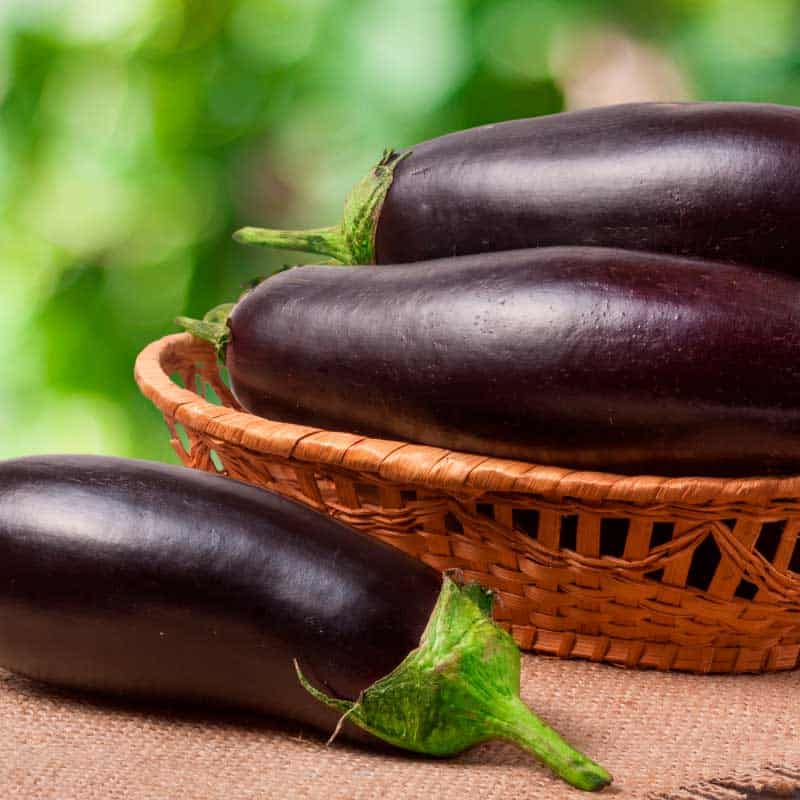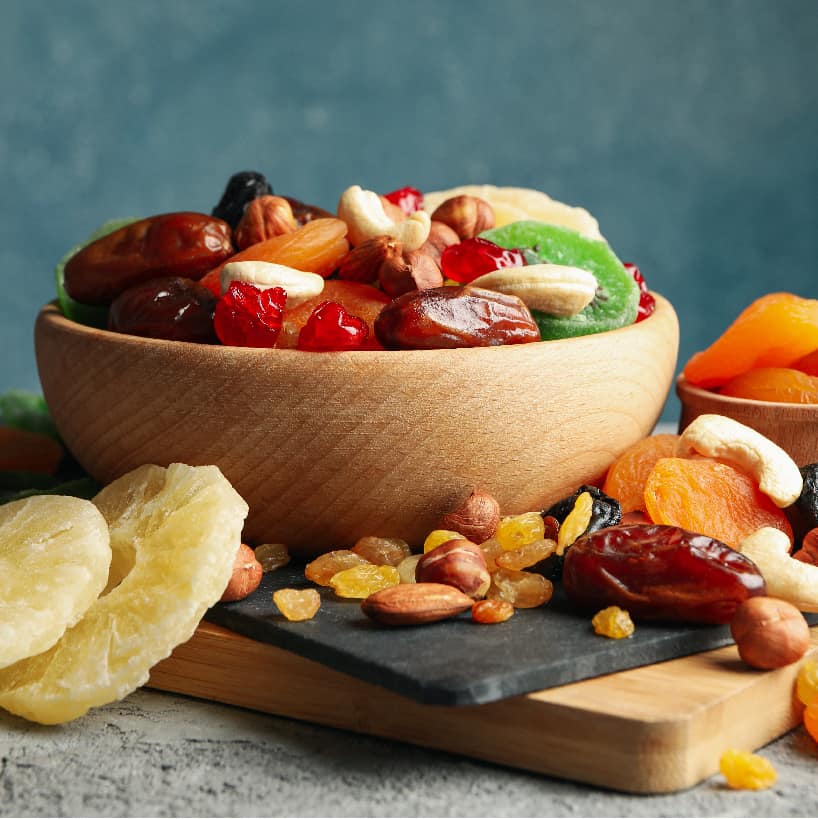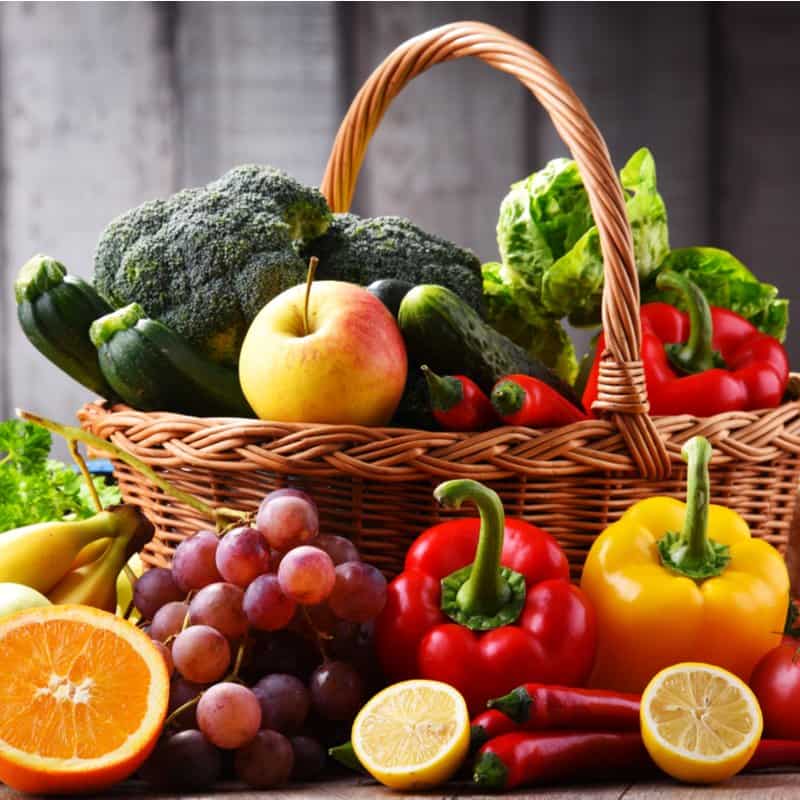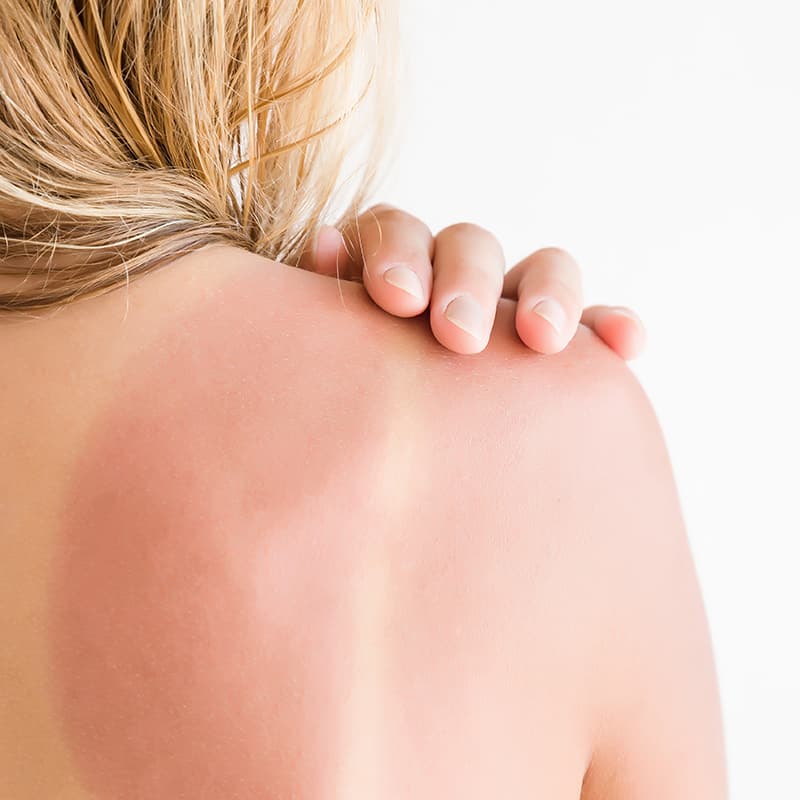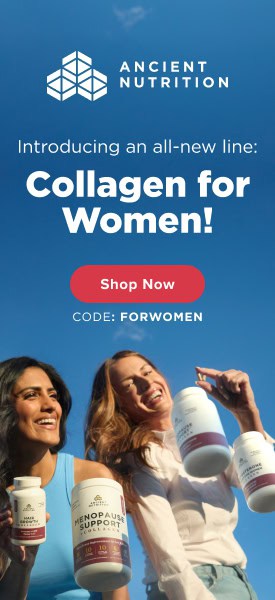This Dr. Axe content is medically reviewed or fact checked to ensure factually accurate information.
With strict editorial sourcing guidelines, we only link to academic research institutions, reputable media sites and, when research is available, medically peer-reviewed studies. Note that the numbers in parentheses (1, 2, etc.) are clickable links to these studies.
The information in our articles is NOT intended to replace a one-on-one relationship with a qualified health care professional and is not intended as medical advice.
This article is based on scientific evidence, written by experts and fact checked by our trained editorial staff. Note that the numbers in parentheses (1, 2, etc.) are clickable links to medically peer-reviewed studies.
Our team includes licensed nutritionists and dietitians, certified health education specialists, as well as certified strength and conditioning specialists, personal trainers and corrective exercise specialists. Our team aims to be not only thorough with its research, but also objective and unbiased.
The information in our articles is NOT intended to replace a one-on-one relationship with a qualified health care professional and is not intended as medical advice.
Iron Deficiency Symptoms, Causes, Risk Factors and How to Reverse
March 28, 2025

Iron deficiency is the most common nutritional deficiency in the U.S., according to the Centers for Disease Control (CDC), with an alarming percentage of women and girls iron deficient. It also affects a huge number of men as well, and iron-deficiency anemia is a huge concern worldwide.
Iron is an essential nutrient that helps the human body perform many functions every day. One of the most important functions for iron is it helps transport oxygen throughout the blood.
Unfortunately, it’s clear that many, if not most, people do not eat enough iron-rich foods on a regular basis, which is why iron deficiency is so prevalent.
What is iron deficiency?
An iron deficiency is most commonly linked to the development of anemia, which is a condition when there’s a lack of healthy red blood cells being produced. Iron helps metabolize proteins and plays a role in the production of hemoglobin and red blood cells, helping prevent anemia from forming.
Iron-deficiency anemia is a common, easily treated condition that occurs if you don’t have enough iron in your body. Low iron levels usually are due to blood loss, poor diet or an inability to absorb enough iron from food.
Iron is needed to produce hemoglobin, a type of protein found in red blood cells that has the role of carrying oxygen from your lungs and transporting it throughout your body to your cells. An iron deficiency can mean that you aren’t able to produce enough oxygen-carrying red blood cells.
Therefore, your body struggles to transport oxygen to your brain, tissues, muscles and cells, leaving you feeling exhausted and weak.
Aside from preventing anemia, iron is a nutrient needed to maintain general well-being, energy and a healthy metabolism because it helps support overall cellular health and is involved in many enzyme functions. Iron plays a part in many enzyme reactions that help our bodies to digest foods and absorb nutrients.
These reactions also balance hormone levels and support brain, heart, skin, hair, nail and metabolic health.
Most of the three to four grams of elemental iron present within our bodies is in the form of hemoglobin. The remaining iron is stored in the liver, spleen and bone marrow, or it is located in our muscle tissues’ myoglobin.
Symptoms
An iron deficiency can lead to the following conditions and symptoms:
- Anemia
- Chronic fatigue or low energy
- Pale or yellowing of the skin
- Shortness of breath
- Abnormal heartbeats
- Signs of a hormone imbalance
- Trouble exercising
- Muscle weakness
- Changes in appetite
- Trouble getting good sleep
- Changes in weight
- Cough
- Trouble concentrating, learning, remembering things
- Sores on your mouth or tongue
- Mood changes
- Dizziness
- Strange cravings to eat items that aren’t food, such as dirt, ice or clay
- A tingling or crawling feeling in the legs
- Tongue swelling or soreness
- Cold hands and feet
- Fast or irregular heartbeat
- Brittle nails
- Headaches
- Poor concentration
- Weakened immune system
- Leaky gut or IBS
People at a greater risk for iron deficiency anemia include:
- Women of childbearing age, especially women with heavy menstrual bleeding
- Pregnant women
- People with poor diets
- People who donate blood frequently
- Infants and children, especially those born prematurely or experiencing a growth spurt
- Cancer patients
- People with heart failure
- People who have gastrointestinal disorders or have had gastrointestinal surgery
- Vegetarians who don’t replace meat with another iron-rich food
Consuming iron-rich foods is especially important for premenopausal women who have higher iron needs than men due to monthly blood losses.
If you’re low in iron, it’s also critical to get plenty of vitamin C in your diet since it increases iron absorption. The recommended dietary allowance (RDA) for iron is eight milligrams per day for men and older women, while premenopausal women need 18 milligrams per day.
The RDAs for vegetarians are 1.8 times higher than meat eaters due to the fact that meat’s heme iron is more bioavailable than non-heme iron from plant-based foods. Also, meat, poultry and seafood increase the absorption of non-heme iron.
Causes
Iron deficiency occurs when the body lacks enough iron to produce hemoglobin, the protein in red blood cells that carries oxygen. Several factors can contribute to iron deficiency, including:
1. Inadequate dietary intake
A diet low in iron-rich foods (e.g., red meat, poultry, fish, leafy greens and fortified cereals) can lead to deficiency. Vegetarians and vegans are at higher risk if they do not consume enough plant-based iron sources and vitamin C (which enhances iron absorption).
2. Blood loss
- Menstrual bleeding: Heavy periods can lead to significant iron loss, making iron deficiency common in women of reproductive age.
- Gastrointestinal bleeding: Conditions like ulcers, gastritis, hemorrhoids, endometriosis or colorectal cancer can cause chronic blood loss.
- Frequent blood donation: Donating blood too often can deplete iron stores.
- Injury or surgery: Significant blood loss from trauma or operations can contribute to deficiency.
3. Increased iron demand
- Pregnancy: The body requires more iron to support the growing fetus and increased blood volume.
- Growth spurts: Children and adolescents need more iron for rapid development.
- Intense physical activity: Athletes, especially endurance athletes, may have higher iron requirements due to increased red blood cell production and potential iron loss through sweating.
4. Poor iron absorption
- Gastrointestinal disorders: Conditions like celiac disease, Crohn’s disease or ulcerative colitis can impair iron absorption.
- Surgeries affecting digestion: Gastric bypass or other weight-loss surgeries may reduce the body’s ability to absorb iron.
- Excessive intake of inhibitors: High consumption of calcium (from dairy products), phytates (in legumes and whole grains) and polyphenols (in tea and coffee) can interfere with iron absorption.
5. Chronic diseases and infections
- Chronic kidney disease : Can lead to reduced erythropoietin production, affecting red blood cell production and iron utilization.
- Inflammatory conditions (e.g., rheumatoid arthritis, lupus): Chronic inflammation can impair the body’s ability to use stored iron efficiently.
- Parasitic infections: Hookworms and other parasites that cause internal bleeding can lead to iron loss, particularly in developing countries.
Iron deficiency can result from a combination of factors, including diet, blood loss, medical conditions, genetics and increased demand. Identifying and addressing the underlying cause is essential for proper treatment and prevention.
Risk factors
There are factors that also put you at a higher risk for an iron deficiency. The most common reasons for an iron deficiency include:
- If you follow a vegetarian or vegan diet (which doesn’t include any animal sources of protein that are naturally high in iron)
- If you exercise a lot (which sometimes can damage red blood cells)
- If you’re pregnant or breastfeeding
- If you’ve ever had kidney failure
- If you’re undergoing, or have undergone, dialysis treatment, which can remove iron from the body
- If you’ve had ulcers in the past
- If you have any known gastrointestinal disorders that can limit your ability to absorb nutrients, such as celiac disease, Crohn’s disease or ulcerative colitis
- If you take a high amount of antacids, since these contain calcium that can prevent iron absorption
- If you’ve recently had surgery or lost blood for any reason, like donating blood
- Age and sex (see below)
The amount of iron that someone needs daily in order to prevent an iron deficiency varies a lot depending on age and gender. Iron can be one of the most common nutrient deficiencies among women. Women need more iron than men do because they lose a certain amount of iron during their normal menstrual cycles each month.
Starting at around the time of adolescence when a woman begins having her menstrual cycle, her daily needs of iron increases, but then the level will decrease once again as the woman reaches menopause. Women who are between the ages of 19 to 50 need to get the most iron of any group, about 18 milligrams of iron each day.
However, men of the same age can get away with having much less and will still be at a lower risk for having an iron deficiency. Men need just about eight milligrams of iron daily.
Blood test
Luckily, an iron deficiency is usually pretty easy to identify with a simple blood test done at your doctor’s office, called a serum ferritin test. In fact, some people find out that they may have an iron deficiency when they attempt to donate blood at a blood donation center and the required screening test reveals that their iron levels are low.
It’s recommended you get your blood checked on a regular basis to see if you need to increase your iron intake, especially if you’re pregnant, a vegetarian or have a digestive disorder.
Complications
Iron deficiency can lead to several health complications, especially if left untreated. These complications vary in severity and can affect different body systems.
1. Anemia
The most serious consequence of iron deficiency is anemia, where the body produces fewer and smaller red blood cells with insufficient hemoglobin. This leads to:
- Fatigue and weakness
- Shortness of breath
- Pale skin
- Dizziness or lightheadedness
- Cold hands and feet
2. Impaired cognitive function
In children, iron deficiency can lead to developmental delays, poor concentration and reduced academic performance. In adults, it can cause difficulty in focusing, reduced productivity and memory problems.
3. Weakened immune system
Iron is essential for immune function. A deficiency can increase susceptibility to infections and lead to prolonged recovery from illnesses.
4. Pregnancy complications
A deficiency in iron increases the risk of:
- Preterm birth.
- Low birth weight.
- Developmental issues in the baby.
- Postpartum depression in mothers.
5. Cardiovascular problems
Severe iron deficiency can lead to an increased heart rate (tachycardia) and heart palpitations as the heart works harder to compensate for low oxygen levels. Chronic anemia even may contribute to heart failure if left untreated.
6. Restless leg syndrome
Iron deficiency has been linked to restless leg syndrome, a condition causing an uncontrollable urge to move the legs, often leading to sleep disturbances.
7. Brittle hair and nails
Insufficient iron can cause hair thinning, brittle nails and, in severe cases, koilonychia (spoon-shaped nails).
8. Pica (craving non-food items)
Iron deficiency can cause unusual cravings for substances like ice, dirt, clay or chalk (a condition called pica).
Untreated iron deficiency can significantly impact overall health, from reduced energy levels to serious heart and developmental complications. Early detection and treatment through diet or supplements can help prevent these complications.
Recommended daily amount
The amount of iron you need changes based on your age. According to the National Institutes of Health Office of Dietary Supplements, the recommended daily amounts of iron are as follows:
- Birth to 6 months: 0.27 mg
- Infants 7 to 12 months: 11 mg
- Children ages 1 to 3 years: 7 mg
- Children ages 4 to 8 years: 10 mg
- Children ages 9 to 13 years: 8 mg
- Teen boys ages 14 to 18 years: 11 mg
- Teen girls ages 14 to 18 years: 15 mg
- Pregnant teens: 27 mg
- Breastfeeding teens: 10 mg
- Adult men 19 to 50 years: 8 mg
- Adult women 19 to 50 years: 18 mg
- Pregnant women: 27 mg
- Breastfeeding women: 9 mg
- Adults 51 years and older: 8 mg
Breast milk is believed to contain highly bioavailable iron but in amounts that are not sufficient to meet the needs of infants older than 4-6 months. It’s best that babies begin to eat solid foods that are naturally rich in bioavailable iron or iron-fortified foods or formula as soon as they are able to.
Infants 7 to 12 months old need more iron than children do because iron supports the process of growth and cognitive development. Because it can be hard for young children to get enough iron from their diet alone, having a blood test done during a toddler’s yearly checkup can identify an iron deficiency before it becomes a bigger problem.
Women who are pregnant need more iron than the general population, so it’s recommended that they take iron as part of a pre-natal vitamin complex.
Treatment
Treating iron deficiency involves addressing the underlying cause and replenishing iron levels in the body. This can be done through dietary changes, supplementation and, in severe cases, medical interventions.
1. Increase Dietary Iron Intake
There are two types of dietary iron:
- Heme iron (better absorbed), found in animal sources like:
- Red meat (beef, lamb)
- Poultry (chicken, turkey)
- Fish (salmon, tuna)
- Organ meats (liver)
- Non-heme iron (less easily absorbed), found in plant-based sources like:
- Leafy greens (spinach, kale)
- Legumes (lentils, beans, chickpeas)
- Fortified cereals and grains
- Nuts and seeds
Improve iron absorption by consuming vitamin C-rich foods (citrus fruits, bell peppers, strawberries) with iron-rich meals. Avoid drinking tea, coffee or consuming high-calcium foods (dairy) with iron sources, as they can block absorption.
2. Iron supplements
Ferrous sulfate, ferrous gluconate or ferrous fumarate are common iron supplements that are typically recommended for moderate to severe iron deficiency. They’re best taken on an empty stomach for maximum absorption but can be taken with food if stomach upset occurs.
You may want to take iron supplements with a form of vitamin C, such as orange juice, since vitamin C can enhance iron absorption.
Side effects may include constipation, nausea and dark stools, and it may take several months of supplementation to restore iron levels fully.
3. Treat underlying causes
If you have a bleeding disorder or other condition that’s affecting iron levels, treating that issue can help resolve a deficiency.
- Heavy menstrual bleeding: Hormonal treatments may help regulate bleeding.
- Gastrointestinal bleeding: If ulcers, polyps or other digestive issues cause blood loss, medical treatment, such as medications or surgery, may be needed.
- Parasitic infections: Antiparasitic treatments may be required if parasites are contributing to iron loss.
4. Iron infusions or blood transfusions (for severe cases)
These more drastic measures may be taken for people with severe cases of iron deficiency:
- Iron infusions: Given through an IV for those who can’t tolerate oral supplements or have severe deficiencies.
- Blood transfusions: Used in life-threatening anemia due to extreme blood loss.
The best treatment depends on the severity and cause of iron deficiency. While diet and supplements are effective in most cases, medical interventions may be needed for severe deficiencies.
Early treatment helps prevent complications and restores normal iron levels.
How to prevent
When it comes to getting enough absorbable iron from food sources, there are several things to consider:
- Animal foods contain a type of iron called heme iron, which is more absorbable than iron found in plant foods, called non-heme iron.
- When you eat different foods together, they can interact to either boost the body’s ability to absorb iron, or they can do the opposite and make it harder to absorb the iron present in the foods.
- The NIH estimates that Americans get about 10 percent to 15 percent of their iron intake from heme iron, while the rest comes from non-heme iron. Because non-heme iron is less absorbable, this may be one reason why iron deficiency is so common.
If you are a vegetarian or vegan, you’ll want to be careful about getting enough iron and may want to consider taking an iron supplement. This is because the type of iron found in plant foods is known to not be as absorbable as animal sources of iron are.
Iron from meat, poultry and fish (heme iron) is absorbed two to three times more efficiently than iron from plants (non-heme iron) is absorbed.
The amount of iron absorbed in the body also depends on the other types of foods eaten at the same meal. Foods like meat or fish that contain the animal source of iron (heme-iron) enhance the body’s ability to absorb the type of iron present in plant foods (non-heme iron).
Iron can be found in plant foods such as spinach and beans, but when you eat these foods along with an animal source of iron, your body is able to use the iron better. Because foods containing vitamin C can also enhance non-heme iron absorption, this is another useful way for vegetarians and vegans to increase their iron stores.
There are also substances found naturally in some foods and drinks that decrease the body’s ability to absorb iron. Foods that contain chemical compounds like polyphenols, phytates or calcium make it harder for the body to absorb and store iron. These can be found in such foods as tea, coffee, whole grains, legumes, nuts, seeds and dairy products.
According to the NIH, “the richest sources of heme iron in the diet include lean meat and seafood. Dietary sources of non-heme iron include nuts, beans, vegetables and fortified grain products. In the United States, about half of dietary iron comes from bread, cereal and other grain products.”
Precautions
When someone has too much iron in their blood, this can also create problems. Iron overload is the accumulation of excess iron in body tissues and can cause a disorder called hemochromatosis.
This is unlikely to happen from eating foods rich in iron alone. Instead, hemochromatosis is usually caused by either genetic causes or from taking iron supplements in high amounts.
High doses of supplemental iron (45 milligrams/day or more) can also cause side effects, including nausea, vomiting, cramps and constipation, but iron in moderate amounts is thought to be well tolerated and shouldn’t cause many adverse reactions.
Keep in mind that iron can interact with other nutrients, including calcium. Some studies have shown that calcium might interfere with the absorption of iron, although this effect has not been definitively established.
Still, experts suggest that people taking calcium and iron supplements should do so separately, spaced throughout the day, in order for both to be most beneficial.
In people who have taken medications for Parkinson’s disease, cancer or heart disease, the medications may be malabsorbed when also taking iron supplements. As a result, these people will want to speak with their doctors before taking any iron supplements on their own.
Final thoughts
- Iron deficiency is the most common nutrient deficiency in the U.S. Typically, women require more iron in their diets than men, although the recommendations vary by age.
- Symptoms of iron deficiency range from anemia to cough and insomnia, with several more in between.
- To prevent iron deficiency, fill your diet with foods high in iron, including beef liver, white beans, sardines and more.
- You may also choose to supplement if you’re unable to get enough iron. This is a common need for people on vegan/vegetarian diets.



